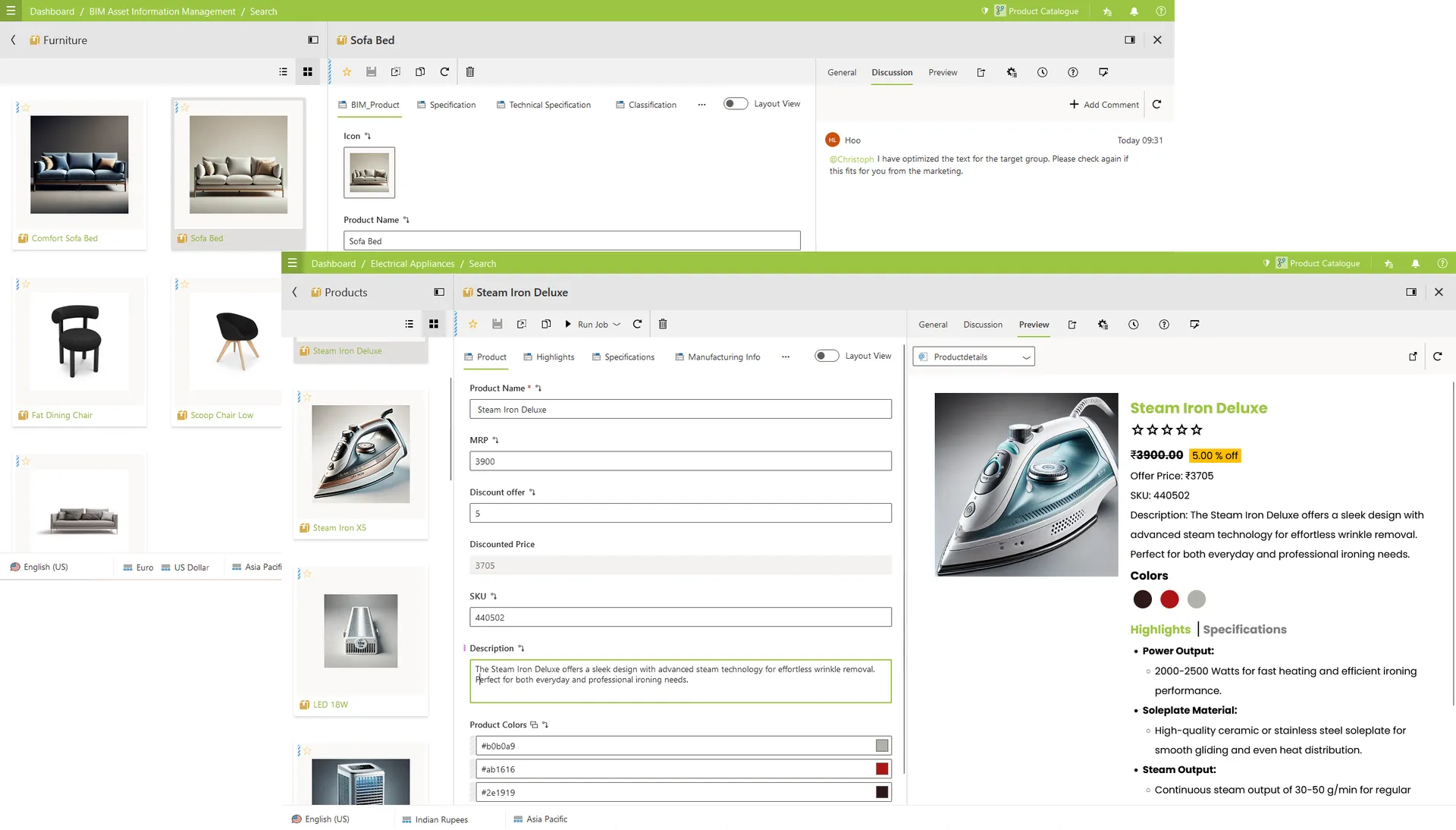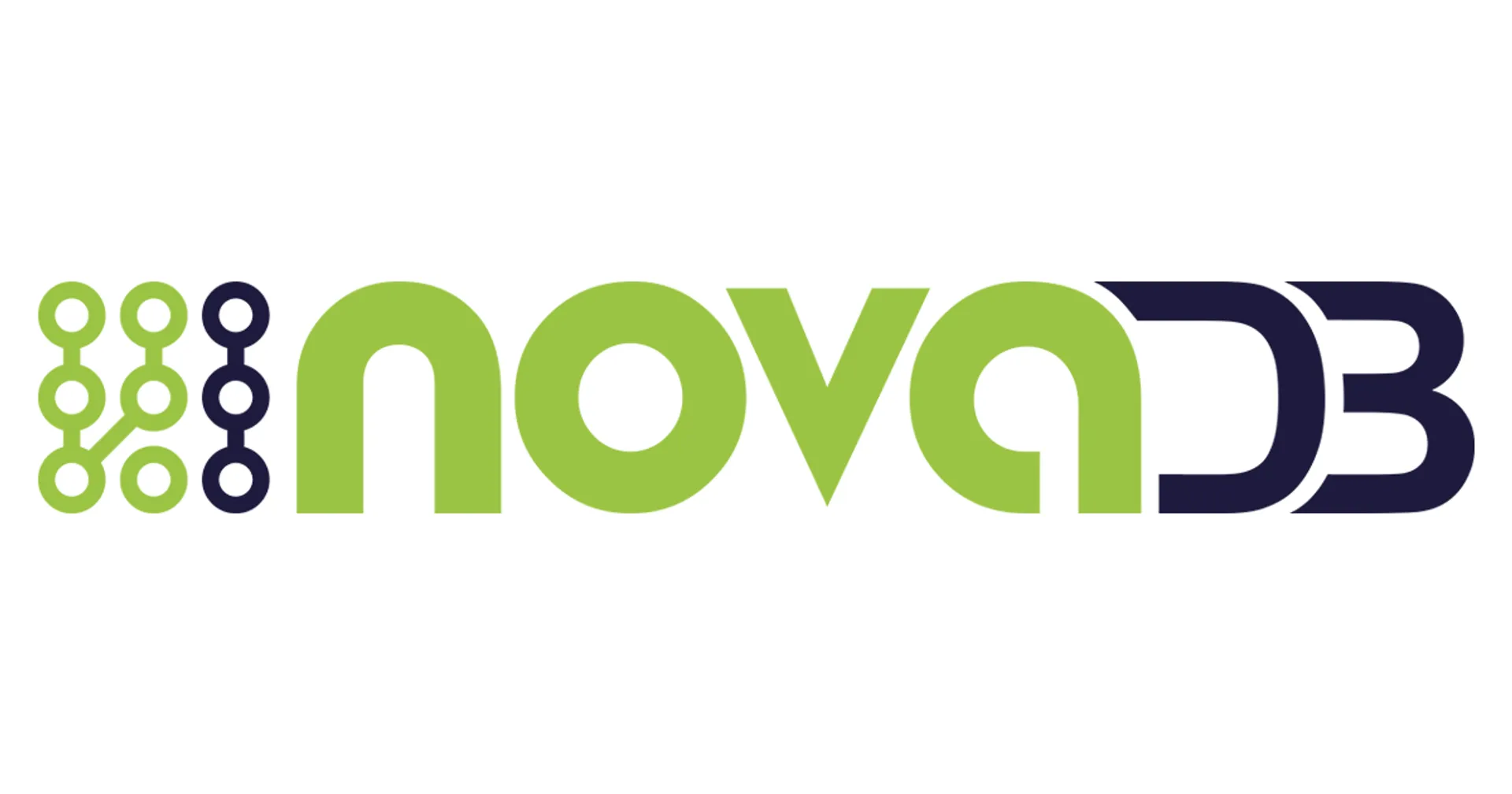Ensure Consistency, Efficiency, and Compliance in Your Product Data Lifecycle: From Engineering to Distribution Product Information Management for Manufacturing
NovaDB PIM empowers manufacturing companies by centralizing product data, eliminating inconsistencies, and ensuring seamless distribution across all channels – all from a single source of truth. Enhance efficiency, maintain data accuracy, and gain a competitive edge with a future-proof PIM solution tailored for manufacturing.

Challenges in Manufacturing Product Data Management
Manufacturing companies that don’t rely on a centralized PIM system often face many challenges.
Fragmented and Disconnected Product Data
Without a single source of truth, product data is scattered across different teams—engineering, production, marketing, and sales—resulting in miscommunication and inefficiencies. A PIM system centralizes product data, ensuring consistent and accurate information distribution across all departments and channels.
Complexity in Managing Bill of Materials (BOMs)
Manufacturers deal with multi-level BOMs, complex product hierarchies, and parent-child relationships between components. Without a structured system, tracking revisions, managing inventory relationships, and ensuring data accuracy becomes overwhelming. NovaDB’s composable data model allows for tailored hierarchies, simplified BOM handling, and efficient updates.
Compliance and Regulatory Challenges
Manufacturing companies must adhere to industry standards varying by region and industry. Managing compliance manually or through disconnected systems increases the risk of errors and non-compliance. NovaDB PIM structures compliance-relevant information and automates tracking, reducing risk and ensuring conformity.
Inconsistent or Inaccurate Product Information Across Channels
Many manufacturers struggle with data discrepancies across platforms—what’s displayed on eCommerce sites may differ from vendor portals, mobile apps, or printed catalogs. These inconsistencies lead to poor user experience, lost sales, and operational inefficiencies. A PIM-System ensures all channels receive the same, up-to-date product data, enhancing customer trust and brand consistency.
Integration Challenges with ERP, PLM, and Other Systems
Most manufacturers use ERP, PLM, CRM, and eCommerce platforms, but these systems often operate in silos, making real-time data synchronization difficult. Without seamless integration, data duplication and errors become inevitable. Thanks to its API-first architecture, NovaDB seamlessly integrates into existing system landscapes.
Localization and Multi-Language Product Information Management
Expanding into global markets requires consistent, localized product information across multiple languages. Manually managing translations is time-consuming and prone to errors. NovaDB offers integrated translation management and localization features to streamline multi-language product communication.
Benefits of PIM for Manufacturers
A modern, API-first PIM system like NovaDB PIM eliminates many of the above challenges.
- Centralizing product data for accuracy and consistency
- Simplifying BOM and variant management
- Faster time-to-market with automated product data distribution
- Lower operational costs by reducing manual data entry and errors
- Improved product quality through better data accuracy and consistency
- Better compliance with industry regulations and certifications
- Future-proof technology with seamless integrations for evolving business needs
.png)
Why NovaDB PIM is the Right Choice for Manufacturing Companies
- Centralized product data for consistency and traceability
- API-First & Cloud-Native Architecture
- Native Multi-Level BOM Management
- Strong integration capabilities
- Compliance-ready data structuring
- Data syndication across multiple channels
- Version control and change management
- Multi-Language & Localization Support
- Scalability, Flexibility, and Future-Proof Real-Time Syndication to All Channels
- Real-Time Data Syndication & API Connectivity

NovaDB PIM in Action: Manufacturing Use Cases
Engineering & Product Development
- Manage technical specifications, CAD data, and BOMs in one platform.
- Ensure seamless data flow between engineering and production teams.
Manufacturing & Supply Chain
- Integrate product information with ERP and PLM
- Reduce errors in material management and part specifications.
Sales, Marketing & Digital Commerce
- Publish product catalogs automatically in multiple languages.
- Distribute accurate product data across B2B platforms, eCommerce stores, and customer portals.
Aftermarket & Service Documentation
- Enable structured documentation for maintenance, repair, and training.
- Ensure field service teams have access to the latest product information.
.png)